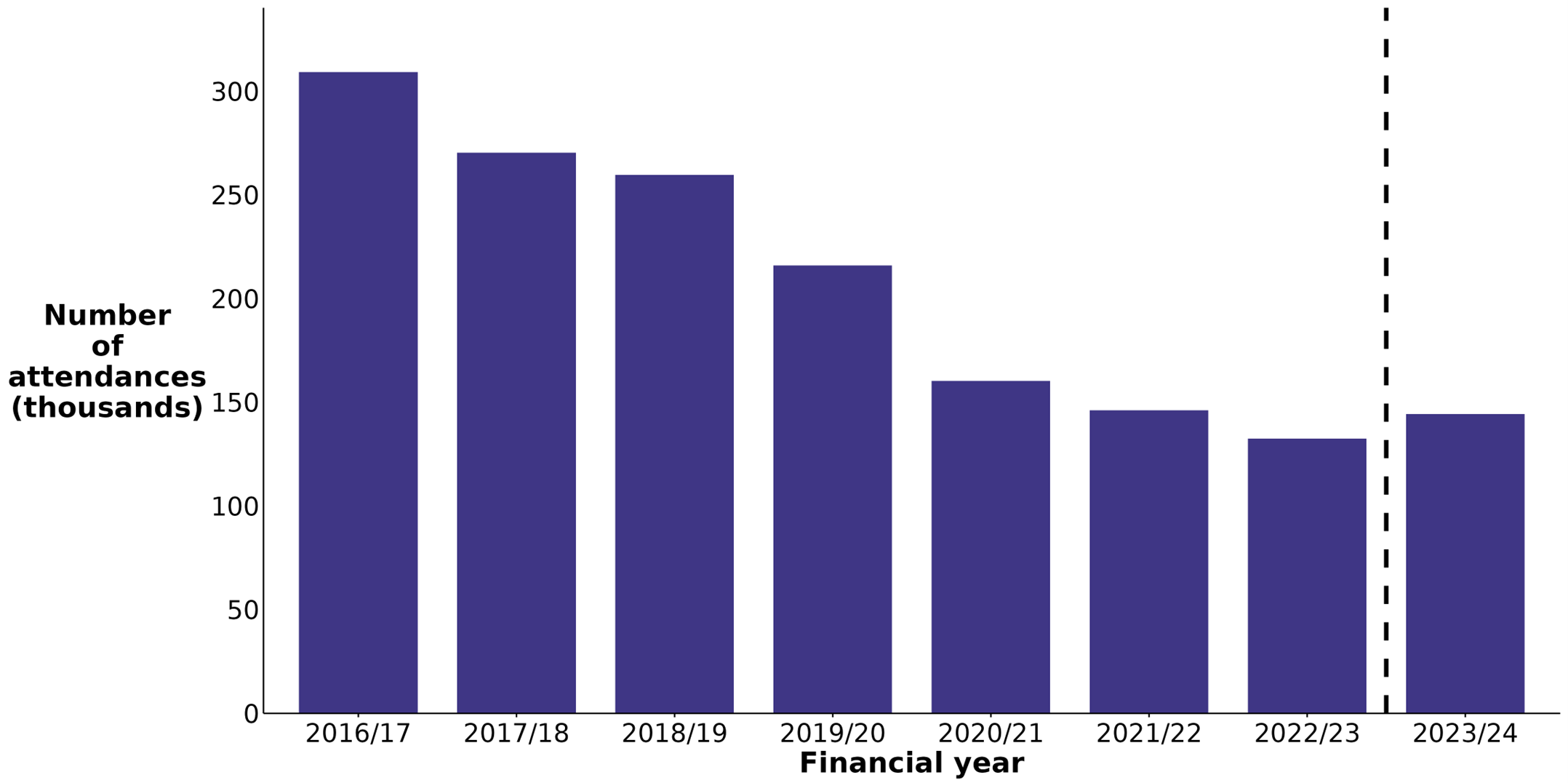Injecting equipment provision in Scotland
2023 to 2024
An Official Statistics publication for Scotland
- Published
- 13 May 2025 (Latest release)
- Type
- Statistical report
- Author
- Public Health Scotland
About this release
This annual release by Public Health Scotland (PHS) presents information on injecting equipment provision (IEP). This includes the number of outlets, attendances and the types of injecting equipment distributed to people who used controlled drugs (including Novel Psychoactive Substances and Image and Performance Enhancing Drugs) in Scotland in 2023/24.
The purpose of injecting equipment provision is harm reduction. The provision of injecting equipment is effective in reducing injecting risk behaviours in people who use drugs. This intervention helps prevent the transmission of blood borne viruses such as hepatitis C and HIV among people who inject drugs. IEP services are operated either by a mix of specialist NHS or third-sector agencies working with people who inject drugs or by pharmacies who choose to supply IEP to people who use drugs.
Main points
In 2023/24:
- There were 363 IEP outlets in Scotland. This was a 10% increase compared to 2022/23 (330).
- There were 144,300 attendances reported by IEP outlets, 9% more than 2022/23 (132,447). This increase may have been due to foil packs now being included in the count of attendances at IEP outlets (See Background for further detail).
- Approximately 2.3 million needles and syringes and 1.7 million items of foil were distributed. Foil distribution decreased by 4% compared to 2022/23. The number of needles and syringes distributed was similar to 2022/23.
- Wipes or swabs (approximately 2.1 million), citric acid or vitamin C (approximately 1.6 million) and spoons/other forms of cooker (approximately 1.5 million) were the most commonly distributed items of other injecting equipment.
* The definition of an attendance was expanded in April 2023 to include the distribution of foil packs. This definition is used as the basis of attendance statistics from the start of 2023/24 and is illustrated as a dashed line in the above chart.
Background
IEP outlets are asked to report on the number of attendances, the number of needles and syringes, foil packs, and items of other injecting equipment distributed. In 2023/24 the definition of an attendance at an IEP outlet was expanded to include attendances where foil packs were distributed. Prior to this, attendances were only counted if the client received a barrel and/or fixed needle and syringe. This recognises changes in drug use and drug consumption, and ensures that the definition of an attendance includes instances where service users sought equipment for safer alternatives to injecting. See glossary within the full report for an explanation of the types of injecting equipment provided.
PHS are aware of some issues with data quality and completeness due to inconsistencies in reporting across NHS Boards. For more details, see Appendices A1.2 and A1.3 in the full report.
Further information
The next release of this publication will be in Autumn 2025.
General enquiries
If you have an enquiry relating to this publication, please contact Nicole Jarvie at phs.drugsteam@phs.scot.
Media enquiries
If you have a media enquiry relating to this publication, please contact the Communications and Engagement team.
Requesting other formats and reporting issues
If you require publications or documents in other formats, please email phs.otherformats@phs.scot.
To report any issues with a publication, please email phs.generalpublications@phs.scot.
Older versions of this publication
Versions of this publication released before 16 March 2020 may be found on the Data and Intelligence, Health Protection Scotland or Improving Health websites.

